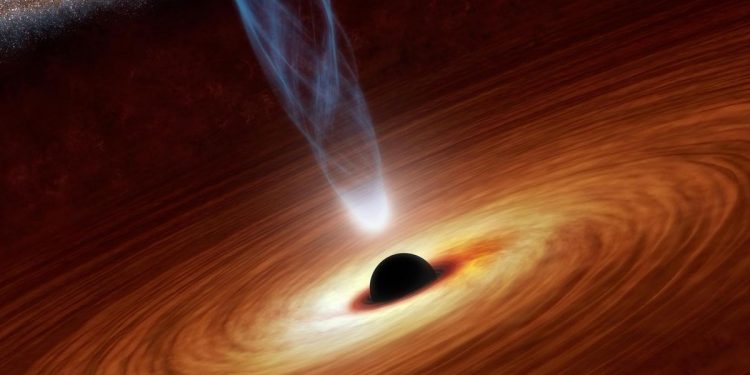Boston: Researchers have, for the first time, detected the gravitational waves from a newly born black hole, and found that the ringing pattern of the waves predicts the cosmic body’s mass and spin, providing more evidence for Einstein’s General Theory of Relativity.
The study, published in the journal Physical Review Letters, increases the possibility that black holes exhibit only three observable properties — mass, spin, and electric charge.
All other properties, the study noted, could be swallowed up by the black hole itself, and are unobservable.
Einstein’s General Theory of Relativity predicted that a black hole of a given mass and spin can only produce tones of a certain pitch and decay.
The team consisting of researchers from the Massachusetts Institute of Technology (MIT) in the US, calculated the mass and spin that the black hole should have using physicist Albert Einstein’s General Theory of Relativity, given its ringing pattern.
These calculations, according to the study, matched earlier measurements of the black hole’s mass and spin.
“We all expect general relativity to be correct, but this is the first time we have confirmed it in this way,” said the study’s lead author, Maximiliano Isi.
He added that this was the first experimental measurement directly testing the theory.
In an earlier discovery of gravitational waves from two spiralling black holes collapsing into one, scientists had determined that the peak of the signal from the waves was linked to the very moment when the two bodies collided.
While there were gravitational waves produced by the black hole newly formed from the collision, its signature ringing was thought to be too feeble to decipher against that of the initial collision.
Isi and his team found a way to extract the black hole’s reverberation from the moments immediately after the signal’s peak, as they had found that the signal contained ‘overtones’ — a family of loud, short-lived tones.
The researchers discovered that they could successfully isolate a ringing pattern exclusive to a newly formed black hole by applying their knowledge of the overtones.
By concentrating on the last few milliseconds of the signal, immediately following the chirp’s peak, the researchers were able to observe the newly formed black hole’s ringing.
“We detect an overall gravitational wave signal that’s made up of multiple frequencies, which fade away at different rates, like the different pitches that make up a sound,” Isi says. “Each frequency or tone corresponds to a vibrational frequency of the new black hole.”
The team used the equations of General Theory of Relativity to calculate the newly formed black hole’s mass and spin using the detected information on its pitch and decay.
Their calculations matched with calculations of the black hole’s mass and spin which were made previously.
PTI





































